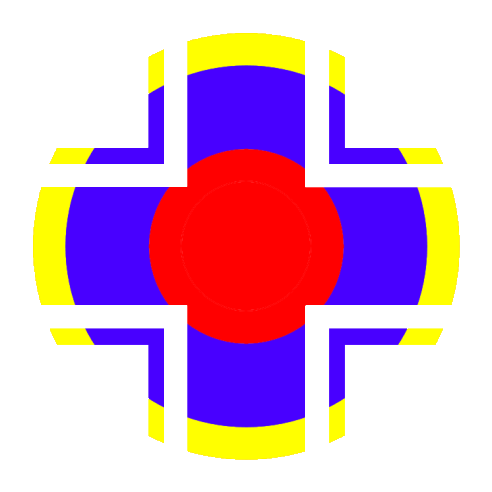(:Category: added) Tag: Visual edit |
(Displayed logo is that of TAIU-SWPA) Tag: Visual edit |
||
| Line 1: | Line 1: | ||
{{Unit infobox |
{{Unit infobox |
||
|name='''''{{PAGENAME}}''''' |
|name='''''{{PAGENAME}}''''' |
||
| − | |image=[[File:Ataiu-01.jpg|thumb|300px]] |
+ | |image= [[File:Ataiu-01.jpg|thumb|300px]] |
| − | |caption=Technical Air Intelligence Unit logo drawn by D.W. Coffin |
+ | |caption= Technical Air Intelligence Unit logo for TAIU-SWPA, drawn by D.W. Coffin during his time on Leyte in the Philippines.{{#tag: ref|The technician astride the aircraft's rear fuselage in the above logo holds an EAR (Enemy Aircraft Report), jotting down information from his two colleagues who are inspecting metallurgy and taking measurements on either side of a caricature of a Japanese pilot. D. W. Coffin was involved heavily in the field collection side of the units operations. The other piece of art associated with ATAIU was nose art on Col. Frank T. McCoy's personal DC-3 which depicted a souvenir hunting serviceman removing parts of the aircraft (does anyone have a photo of this nose art?). Frank McCoy's son told me that one of his father's aircraft was named "Junebug" after his daughter June.<ref>[http://www.ozatwar.com/usaaf/atiu.htm Australia at War]</ref>|group="N"}} |
|nickname(s)= |
|nickname(s)= |
||
|type= |
|type= |
||
Revision as of 08:54, 30 January 2018
Technical Air Intelligence Units (TAIU) were joint Allied military intelligence units formed during World War II to recover Japanese aircraft to obtain data regarding their technical and tactical capabilities. The first such unit, known later as Technical Air Intelligence Unit–South West Pacific (TAIU-SWPA), was formed in November 1942 by the United States Navy (USN), United States Army Air Forces (USAAF), the Royal Australian Air Force (RAAF) and the Royal Navy at Eagle Farm Airbase, Brisbane, Australia, in November 1942.[2] During 1943–44, three other TAIUs were formed in the other Allied theatres of the Pacific War.[3][4]
South East Asia: ATAIU-SEA; British Royal Air Force (RAF)/USAAF
Pacific Ocean Areas: TAIU–POA; US Navy
China: TAIU-CHINA; Republic of China Air Force
A proposed joint US Army-US Navy research unit (TAIC) in the continental United States was never truly established, as in the end neither service was prepared to work with the other.[2] Some Japanese aircraft were tested in the US, at various bases, by pilots from the Naval Air Test Center, the USAAF Test Training Unit (which was established with the assistance of RAF technical intelligence units in Europe) and the National Advisory Committee for Aeronautics.
Crashed and captured aircraft were located, identified, and evaluated (often in or near the front lines), before being recovered for further tests. Aircraft that were not too badly damaged were rebuilt for test flights that revealed vulnerabilities that could be exploited. Examination of the materials used in the construction of aircraft allowed the Allies to analyse Japanese war production. The unit also absorbed a small team who developed the code name system for Japanese aircraft, and produced aircraft recognition charts and photographs.[2]
Notes
- ↑ The technician astride the aircraft's rear fuselage in the above logo holds an EAR (Enemy Aircraft Report), jotting down information from his two colleagues who are inspecting metallurgy and taking measurements on either side of a caricature of a Japanese pilot. D. W. Coffin was involved heavily in the field collection side of the units operations. The other piece of art associated with ATAIU was nose art on Col. Frank T. McCoy's personal DC-3 which depicted a souvenir hunting serviceman removing parts of the aircraft (does anyone have a photo of this nose art?). Frank McCoy's son told me that one of his father's aircraft was named "Junebug" after his daughter June.[1]
Sources
- ↑ Australia at War
- ↑ 2.0 2.1 2.2 http://www.j-aircraft.com/research/David_Trojan/Technical%20Air%20Intelligence%20Wreck%20chasing%20in%20the%20Pacific%20during%20the%20war.pdf
- ↑ Starkings, Peter. The End of the JAAF and JNAF Japanese WW2 Aircraft Website
- ↑ Harold Skaarup, 2006, RCAF War Prize Flights, German and Japanese Warbird Survivors, Bloomington Indiana, iUniverse, pp33–4.
